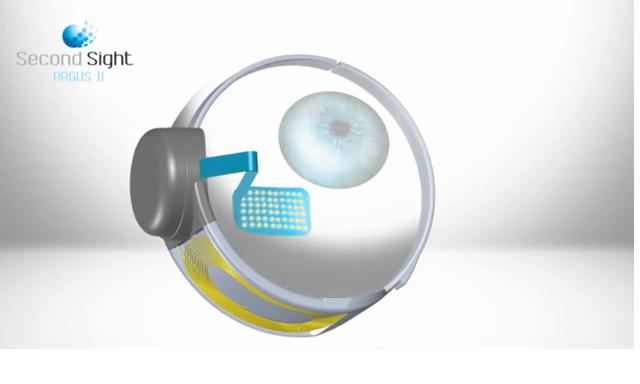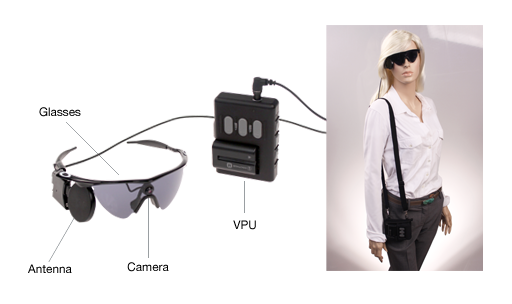Argus II | FDA Approved Bionic Eye

Some big news that hit the technology newswires recently was the FDA approval of a bionic eye. This bionic eye is designed to help people with severe retinitis pigmentosa (RP) to see light better. Available in Europe since 2011, the Argus II by Second Sight of Switzerland is now available in the U.S. Although the bionic eye does not restore full vision, it can help bring back useful sight for those who need it.

What’s RP?
RP is a degenerative disease that affects vision clarity, scope, and color detection. A friend and coworker of mine has RP and at this point can still see somewhat out of one eye. That eye has tunnel vision and is blurry. Here’s how Second Sight describes RP:
Early symptoms of the disease often are first experienced in childhood (loss of the ability to see at night or in very low light). Later the disease may lead to blurring of vision, tunnel vision, loss of central vision or loss of the ability to see colors. In many cases, these severe vision problems do not occur until early adulthood. In advanced stages of the disease, RP can lead to a person being able to see only very bright flashes of light. In the worst case, the person may experience total blindness.
Bringing Light Back
The Argus II system can bring back those flashes of light to those who have lost that ability. Being able to see these flashes of light can help someone notice objects, see crosswalk markings, and some very large text. Anyone using the Argus II would still need to utilize other visual aids such as a white cane.

How It Works
The system consists of an eye implant, glasses with camera, and video processing unit (VPU). In simple terms this is how the system works. The camera in the glasses send the images to the VPU. The VPU processes the images and sends the information back to the glasses. The glasses then send this information wirelessly to the eye implant. The eye implant has a microchip at the back of the eye that sends signals to remaining retina cells. The brain is then able to interpret these signals. Here’s a more detailed explanation by Second Sight:
The Argus II Retinal Prosthesis System (“Argus II”) is designed to bypass the damaged photoreceptors altogether. A miniature video camera housed in the patient’s glasses captures a scene. The video is sent to a small patient-worn computer (i.e., the video processing unit – VPU) where it is processed and transformed into instructions that are sent back to the glasses via a cable. These instructions are transmitted wirelessly to an antenna in the implant. The signals are then sent to the electrode array, which emits small pulses of electricity. These pulses are intended to bypass the damaged photoreceptors and stimulate the retina’s remaining cells, which transmit the visual information along the optic nerve to the brain. This process is intended to create the perception of patterns of light which patients can learn to interpret as visual patterns.
Conclusion
While Argus II does not bring back full vision, it can still be of use to many. It’s also a technological stepping stone towards full vision technology. For much more information on Argus II visit 2-sight.eu/en and watch the video below.
